

Let’s Go Fly a Kite
Brookings Kite Festival Creates Excitement
Pages 8-9
Cooperative Metering
Pages 12-13



Let’s Go Fly a Kite
Brookings Kite Festival Creates Excitement
Pages 8-9
Cooperative Metering
Pages 12-13
Solar, and even wind, installation has struck curiosity among some of our members and with a Google search, information on where to buy it, or even how to save by installing it yourself is readily available.
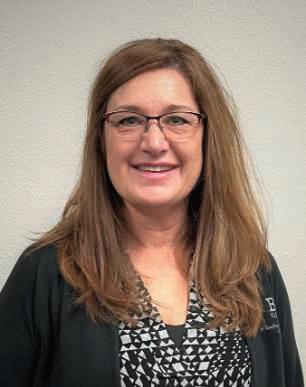
One thing that most searches don’t cover is the importance of contacting your utility before you purchase and have it installed. B-Y Electric has technical requirements that ensure the safety of our linemen, and that the integrity of the B-Y Electric distribution system is not compromised. Knowing what these requirements are can avoid costly changes if these requirements are not met.
One thing that most searches don’t cover is the importance of contacting your utility before you purchase and have it installed.
To help our members and B-Y Electric eliminate confusion, we worked with other South Dakota electric co-ops and developed an interconnection process. This process, policies, applications, and agreements are posted on our website in the NOVA Portal. Go to www.byelectric. com and under the My Energy tab go to the Distributed Energy- DER Interconnection Process. I also encourage you to call the office and speak with Aaron Melichar. He will guide you to the first step in the process and answer any of your questions.
In addition to knowing what the interconnection process is, we encourage members to use a reputable installer. They understand the technology and that there are utility and state electrical requirements that need to be met. Depending on the size of the system, there are also PUC and county guidelines that also need to be followed.
Our goal is that if a member desires to install a distributive generation resource, that it is done safely utilizing the step-by-step interconnection process.

(USPS No. 018-973)
Bon Homme Yankton Electric Association, Inc PO Box 158 134 S. Lidice St. Tabor, SD 57063
Office Hours: Monday through Friday 7:30am - 4:00pm
To pay by phone, call: 1-888-395-5315
To report an outage, call: Local call from Tabor, Tyndall, and Yankton: 605-463-2507
NOTICE: Electric bills must be paid by 10:00am on the 20th of each month to avoid a $10 late fee.
Board President: Paul Voigt
Board of Directors
Dave Sykora - Vice President
Dave Sternhagen - Secretary
Robert Ruppelt - Treasurer
Dean Sternhagen
John Lillevold
Rick Cheloha
General Manager: Stephanie Horst
Operations Manager: Ken Carda Office Manager: Nicole Einrem
Members Service Advisor: Aaron Melichar Editor: Chantelle Jungemann
Bon Homme Yankton Electric Cooperative Connections is the monthly publication for the members of Bon Homme Yankton Electric Association, Inc, PO Box 158, 134 S. Lidice St., Tabor, SD 57063-0158. Families subscribe to Cooperative Connections as part of their electric cooperative membership. The purpose of Bon Homme Yankton Electric Cooperative Connections is to provide reliable, helpful information to electric cooperative members on electric cooperative matters and better rural living. Subscription information: Cooperative members devote 50 cents from their monthly electric payments for a subscription. Non-member subscriptions are available for $12 annually. Periodicals postage paid at Tabor, SD 57063.
Postmaster: Please send address changes to Bon Homme Yankton Electric Cooperative Connections, PO Box 158, Tabor, SD 57063; telephone (605) 463-2507. Tabor, SD 57063; telephone (605) 463-2507. This institution is an equal opportunity provider and employer.

The May board meeting was held on May 22, 2024 at 8:00 am. Directors personally present were Dave Sternhagen, Dave Sykora, Dean Sternhagen, Rick Cheloha, John Lillevold and Paul Voigt. Director Robert Ruppelt appeared via Zoom. Others present were the attorney, management staff and guest employee.
THE BOARD APPROVED THE CONSENT AGENDA:
• April 2024 Board Meeting minutes
• Review New Members & Cancellations
• Four Capital Credits to Estates Discounted - $3,810.59
• Closed Work Order Inventory - None
• Review Special Equipment Purchases$7,361.76
THE BOARD REVIEWED AND ACCEPTED FOLLOWING REPORTS:
• Member Service Report
• Operations & Safety Report
• Office & Financial Reports
• General Manager Report
• East River Cyber Security Report
• IT Report
• SDREA Report
• NRECA Legislative Forum
• East River Report OTHER GOVERNANCE
• Enter/Exit Executive Session
• 437th Ave Work Order Funded by cooperative, estimated $10,698.78.
• 1st Quarter Board/Manager Expenses
YTD Meeting Expenses
• NCSC & CFC Annual Meeting Notices
• CFC & NCSC Appoint GM Stephanie Horst Voting Delegate
• Notice of Caucus District 1, Basin Electric Voting Delegate/Alternate (Paul Voigt/Dean Sternhagen)
• Next Meeting date set for Friday, June 21, 2024, at 8:00 am.

Summer is synonymous with barbecues, parades and fireworks. The National Safety Council advises everyone to enjoy fireworks at public displays conducted by professionals, and not to use any fireworks at home. They may be legal but they are not safe.
Every year, thousands of people are injured badly enough to require medical treatment after fireworks-related incidents, with many of the injuries to children and young adults. While the majority of these incidents are due to amateurs attempting to use professional-grade, homemade or other illegal fireworks or explosives, less powerful devices like small firecrackers and sparklers can also cause significant injury.
Additionally, fireworks start an average of 19,000 fires each year.
If consumer fireworks are legal to buy where you live and you choose to use them, be sure to follow the following safety tips:
• Never allow young children to handle fireworks
• Older children should use them only under close adult supervision
• Never use fireworks while impaired by drugs or alcohol
• Anyone using fireworks or standing nearby should wear protective eyewear
• Never hold lighted fireworks in your hands
• Never light them indoors
• Only use them away from people, houses and flammable material
• Never point or throw fireworks at another person
• Only light one device at a time and maintain a safe distance after lighting
• Never ignite devices in a container
• Do not try to re-light or handle malfunctioning fireworks
• Soak both spent and unused fireworks in water for a few hours before discarding
• Keep a bucket of water nearby to fully extinguish fireworks that don’t go off or in case of fire
• Never use illegal fireworks
Better yet, grab a blanket and a patch of lawn, kick back and let the experts handle the fireworks show.
Every year, young children can be found along parade routes and at festivals with sparklers in hand, but sparklers are a lot more dangerous than most people think.
Sparklers burn at about 2,000 degrees – hot enough to melt some metals. Sparklers can quickly ignite clothing, and children have received severe burns from dropping sparklers on their feet. According to the National Fire Protection Association, sparklers alone account for more than 25% of emergency room visits for fireworks injuries. For children under five years of age, sparklers accounted for nearly half of the total estimated injuries.
Consider using safer alternatives, such as glow sticks, confetti poppers or colored streamers.
Source: National Safety Council
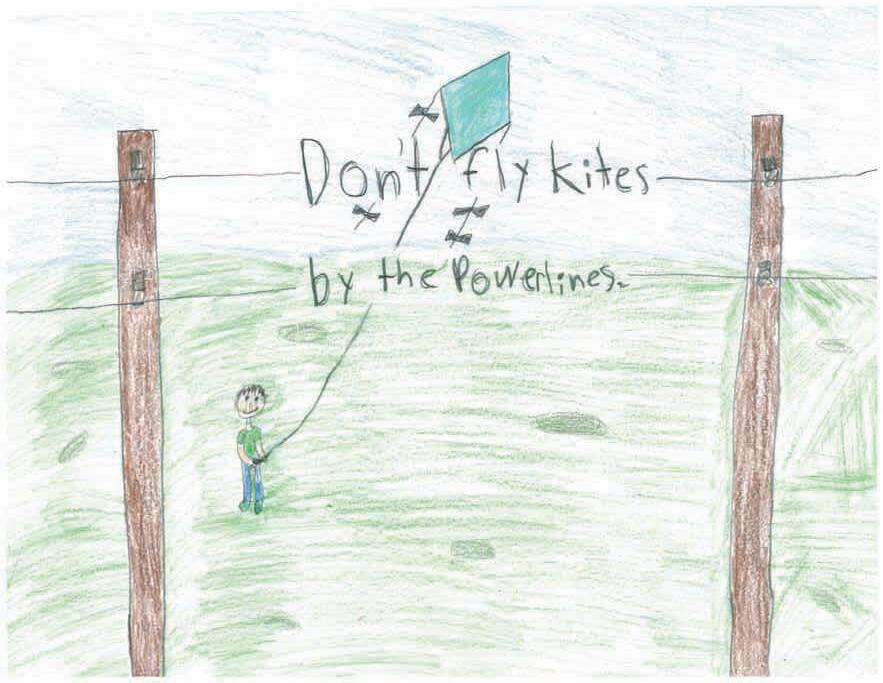
“Let’s Go Fly a Kite Up to the Highest Heights.”
Eldon Femrite warns readers to not fly kites by power lines this summer. Eldon’s parents are Jody and Rosemary Femrite, members of Codington-Clark Electric.
Kids, send your drawing with an electrical safety tip to your local electric cooperative (address found on Page 3). If your poster is published, you’ll receive a prize. All entries must include your name, age, mailing address and the names of your parents. Colored drawings are encouraged.

Ingredients:
1 refrigerated pie crust, (from 14.1-oz. pkg.)
3 eggs, lightly beaten
1 cup firmly packed light brown sugar
1 cup light corn syrup
Ingredients:
2 cups heavy cream
14 oz. sweetened condensed milk
Other mix-ins as desired
Method
In a mixing bowl, whip heavy cream until stiff peaks form.
Mix in sweetened condensed milk and any flavors/mix-ins you like (strawberries, Oreos, lemon, vanilla extract, etc.).
Pour into loaf pan and freeze until solid (2+ hours).
Kayla Beaner
Centerville ,S.D.
2 tbsps. butter, melted
1 tbsp. cinnamon extract
1 1/2 cups pecan pieces
Method
Preheat oven to 350°F. Prepare pie crust as directed on package for one-crust pie using 9-inch pie plate.
Mix eggs, sugar, corn syrup, butter and cinnamon flavor in large bowl until well blended. Stir in pecans.
Pour into crust. Bake 50 to 55 minutes or until knife inserted halfway between center and edge comes out clean. Cool completely on wire rack.
McCormick.com
Ingredients:
Crust
1-2 cups flour
1/2 stick butter or margarine
1/4 cup water
Pie
3 tbsps. butter or margarine
1 cup sugar
3 eggs, separated
2 tbsps. flour
1/2 tsp. salt
2 1/2 cups cut rhubarb
Smucker’s caramel sundae syrup
Method
Crust: Add ingredients and knead to complete pie crust. Amounts will vary due to humidity. Knead dough into pie pan and poke holes into the bottom as needed. You may make creative edges as you wish, however it is not necessary.
Pie: Soften butter or margarine and stir together with the sugar, egg yolks, flour, and salt. Beat egg whites until stiff. Add rhubarb and fold in the egg whites. Add the filling to the 8-inch, unbaked pie crust. You may add a drizzle of Smucker’s sundae syrup for additional flavoring before baking. Bake in oven set at 400 until golden brown. You may also add more caramel syrup to pie after baking for ultimate effect.
Lisa Kummer Soukup
Tea, S.D.
Please send your favorite recipes to your local electric cooperative (address found on Page 3). Each recipe printed will be entered into a drawing for a prize in December 2024. All entries must include your name, mailing address, phone number and cooperative name.
Being part of an engaging community, it enables us to share personal relatedness and support perpetual growth of each other, ourselves, and our community. When we volunteer to share something with people around us - no matter how small or insignificant it seems - it can help make connections with our members. Community projects like this building at the town pool are using this principle to bring us all closer. Pictured are two of our linemen finishing the building project. Them along with other B-Y Electric employees put several hours into this project. What a great benefit to the Tabor Community Pool that members here in town and surrounding area can enjoy.

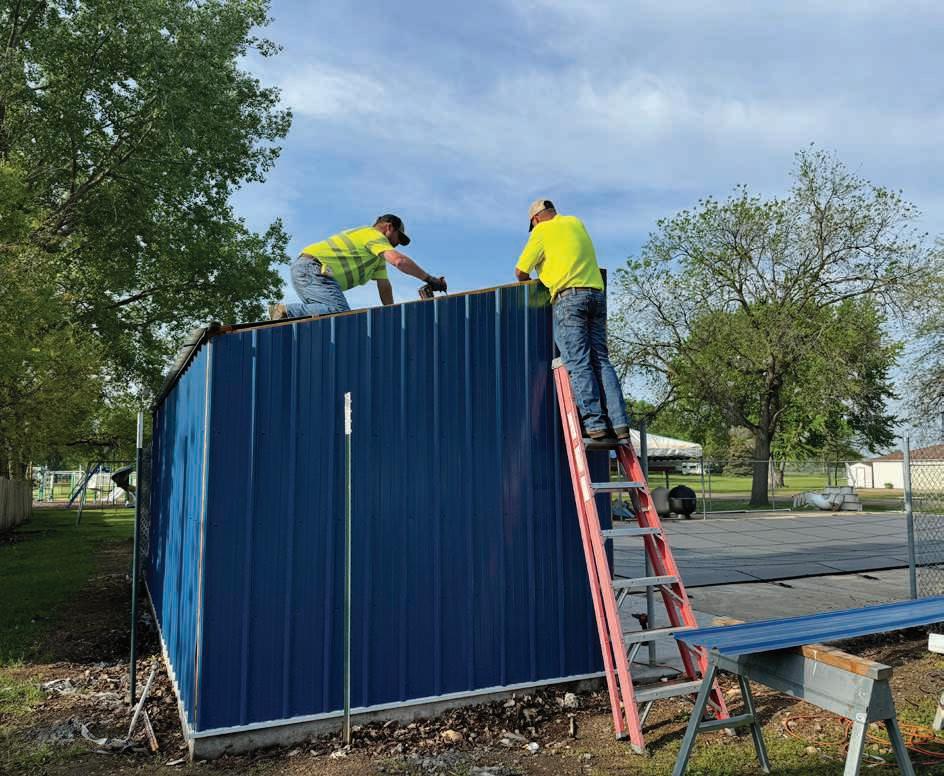





B-Y Electric sent out capital credit allocation notices on May 13. This notice indicates your share of the margins from 2022 electric energy sales.
Bon Homme Yankton Electric is a non-profit, member owned cooperative. This doesn’t mean there are no profits earned, but that any profits or margins that are generated are split amongst the members based on how much they spent on electricity for the year that is being allocated.
I HAVE SEVERAL ACCOUNTS, WHY DO I ONLY RECEIVE ONE NOTICE?
Even if you pay a bill for several locations, you have just one membership with the cooperative and will just receive one official allocation notice. If you would like more detailed information, contact our office.
DO
Capital credit refunds are usually processed every year using a first in first out method. The 2023 refund included allocations from 2004 and 2005.
Depending on the financial condition of the cooperative, the next refund will start with the rest of 2005 but has not been scheduled at this time. In the past few years, we have issued capital credit refunds late in the fall.
2020 was the first year we issued capital credits as bill credits for active members but still print checks for inactive members. Look for your prior refund on your December 1, 2023 electric bill.
Members cannot claim the balance of their account when they leave
our system. As long as we have their current address, we will continue to send them their refund checks on our regular refund schedule. Several checks go unclaimed because we are unable to locate previous members.
The Affidavit of Address form as well as a list of members with outstanding or unclaimed checks are available at byelectric.coop/capitalcredits.
Upon the death of a member, the bylaws allow the capital credit account to be refunded at a discounted amount up to the date of death. 30 days need to pass after the date of death and an application has to be made, reviewed by our attorney, and approved by the board.
DO MEMBERS HAVE TO PAY TAXES ON THEIR ALLOCATION?
It is not required that capital credit
allocations be reported to the IRS at the time it is allocated. When the capital credits are refunded, the refund is only considered taxable income in relation to the same portion of the electric bill that was claimed as a business or farm expense in the year that it was originally allocated.
Most members either report the allocation or the refund as taxable income for their farm, but you should not report both--just be consistent.
If you always report the allocation but have already filed your taxes, you may save this notice for your 2024 taxes.
For more information, members should contact their tax preparer. Contact the office if you have any questions regarding capital credits. You will not get a notice unless you purchased electricity in 2022.

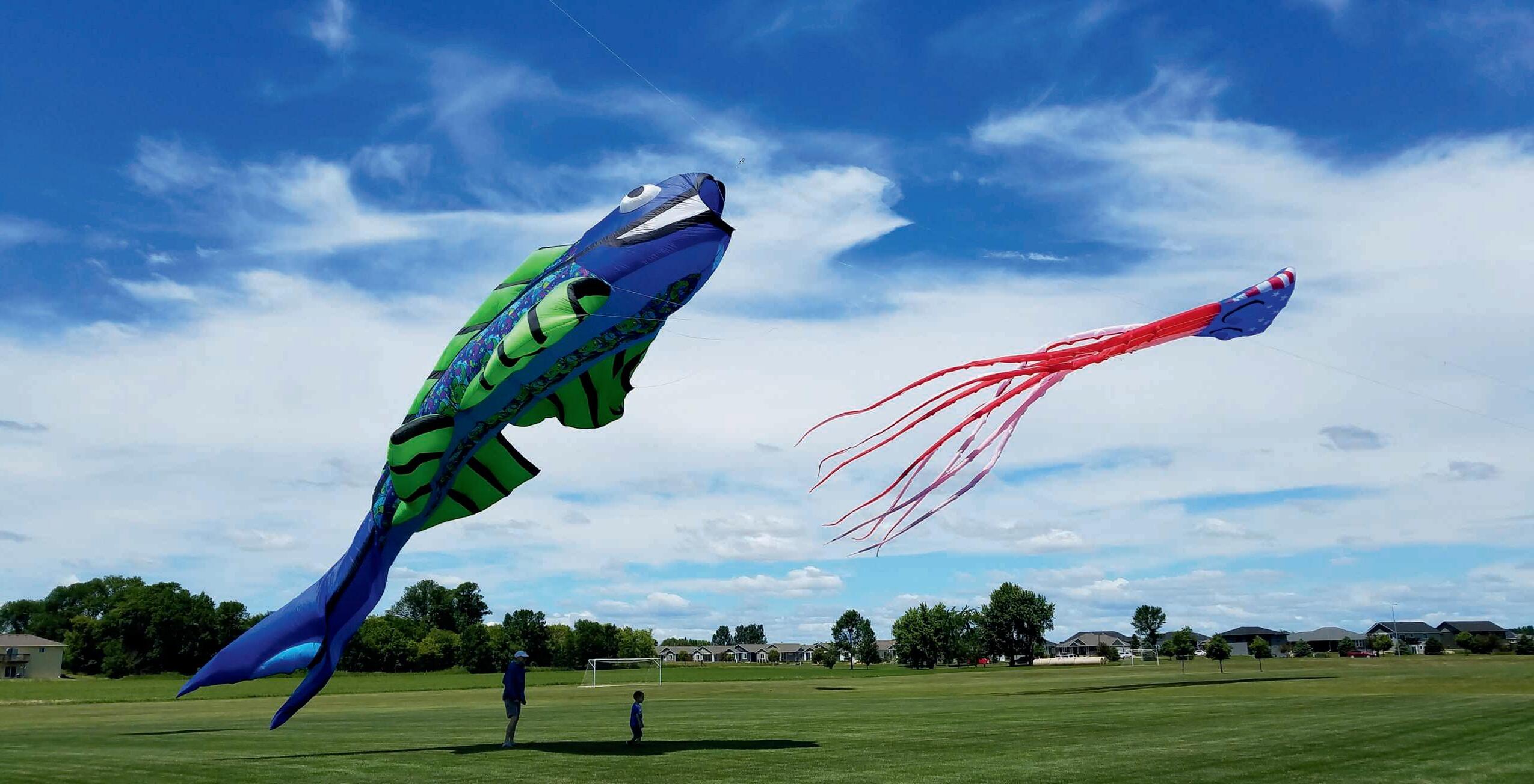
Shannon Marvel shannon.marvel@sdrea.coop
The sky becomes more of an art canvas during the Brookings Kite Festival. For the last 25 years, kite fliers from across the country gather to let their art take flight at the festival.
One of those artists is Mike Gee of North Dakota.
“We go down there to Brookings and really like the kite flying field there. It’s just nice to come down and fly kites with friends who also enjoy flying kites,” Gee said.
Gee flies what’s called “show kites”, which are big, inflatable kites that can span 20 feet across the sky.
There are other kites flown during the festival, including soft kites, stick kites and sport kites.
A sport kite is one that is attached to two or four lines. Often they’ll be flown in teams and perform maneuvers in the sky.
“If you talk about crazy kites, there’s a wide variety. There are so many different creative people building things in creative ways,” Gee said. “It is definitely an art. It’s what you put on the canvas that makes it special.”
The kites are typically made with nylon, sail making cloth that doesn’t stretch.
“You can’t just go to the fabric store and buy tent fabric. We have a couple different weights of fabrics we use. And you need that tail on there to keep the kite stable,” Gee said.
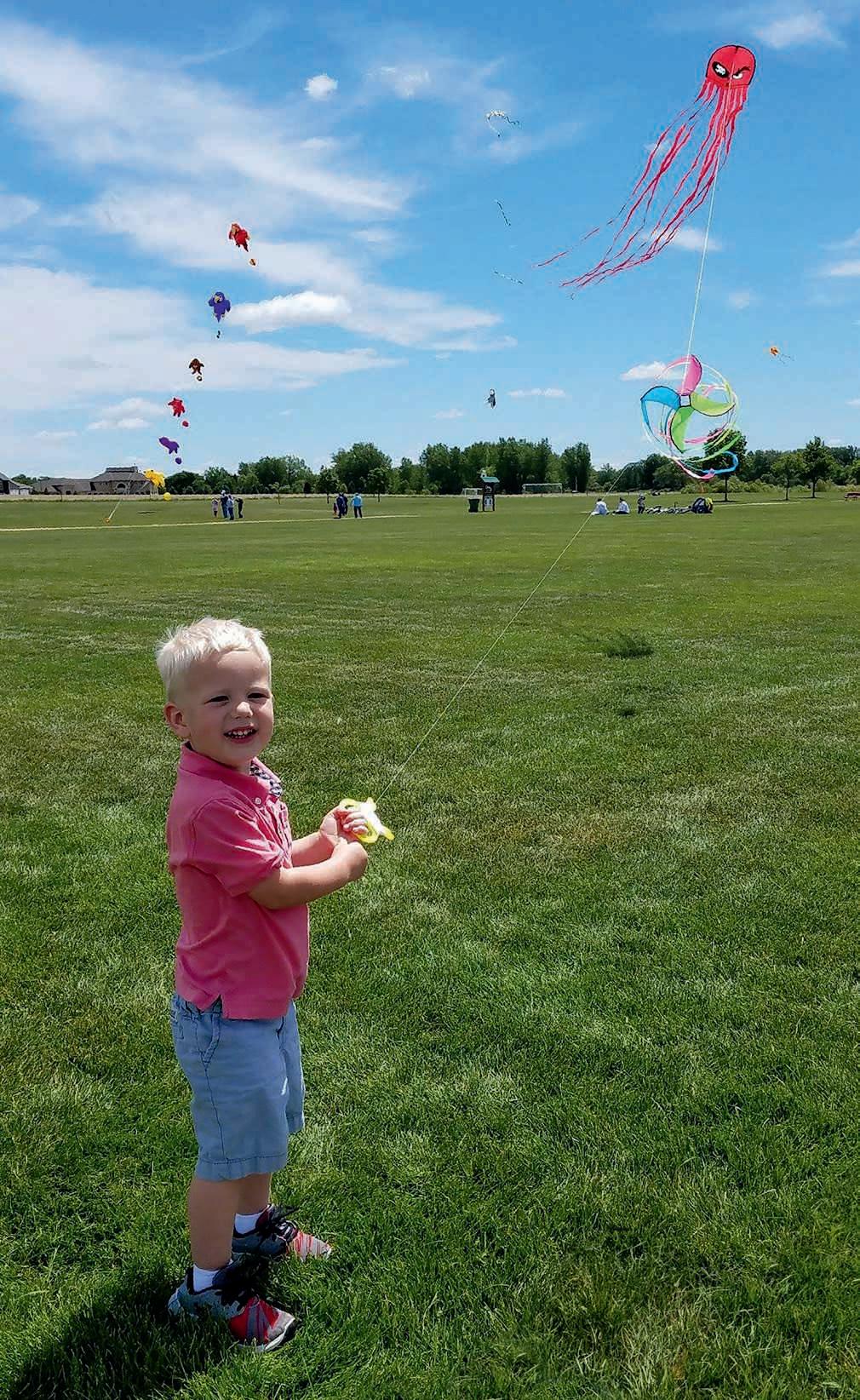
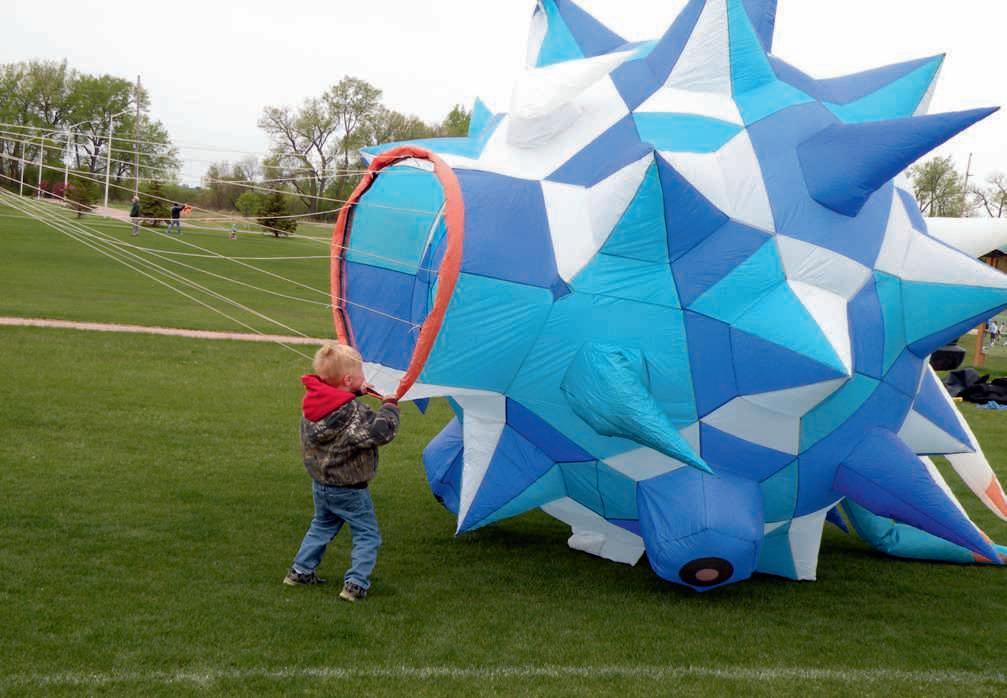
Sally Damm Norby, of the Brookings Optimists Club, said the festival got its start when Lynn Versher, former director of the South Dakota Art Museum, approached Optimist member Bill Flynn about creating a joint effort to bring big kites to Brookings.
“This volunteer organization aims to make a positive impact on the lives of youth and communities. The Brookings club’s primary focus is on advancing the opportunities and programs for youth events that are encouraging with exceptional supportive outcomes. The Brookings Optimist Kite Festival offers a comprehensive learning experience that incorporates expressions of culture, science, creativity, civic involvement, and is
environmentally friendly,” Norby said.
Youth are encouraged to come down and learn how to make a kite of their own, with professional guidance.
Gee said he encourages visitors to come up to kite fliers to ask questions or strike up a conversation.
“One thing I really like about kite flying is it seems like no matter who you talk to on the field, someone can relate to an experience of flying a kite,” Gee said. “When we start flying kites, it brings back memories of when other folks were kids flying kites. It’s kind of emotional for some people.”
This year’s event will take place on June 22-23 at the Fishback Soccer Park in Brookings.
Gee said this location is a safe spot to fly kites, and well away from any electrical line hazards.
“If you’ve flown kites long enough, you have a story about power lines. When you hit a line, you call the power company, and they advise you of what to do. The best thing to do is avoid those wires. I always think, ‘If my line breaks, which way is my kite going to go and what’s over there,’” Gee said.
Gee encourages visitors to come down to the Brookings Kite Festival with their lawn chairs and blankets and stay for more than just a half hour.
“The thing is when the wind changes direction or speed, the kites change. There’s just so much going on throughout the day. You’ve really got to sit back and pay attention,” Gee said.


from
Electricity is not as easy as turning on a light switch. Electricity takes a long journey from the generation source to your home every day. June 5-7, a group of cooperative members and employees learned about that journey during our biyearly Basin Tour of the co-op power plants in North Dakota.
Every other year, B-Y Electric sponsors a power supply tour with our cooperative neighbors ClayUnion Electric and Union County Electric to educate cooperative members about what it takes to provide electricity to our area. The last trip was in 2022.
The Basin Tour takes members on a fact-finding electrical journey from the origins of the fuel to the flip of the light switch.
The electricity that B-Y Electric members receive travels over Basin Electric high voltage power lines from sources such as coal,

natural gas, wind, and nuclear to our wholesale power supplier East River Electric before reaching our members’ homes.
The first day was spent driving to Bismarck, ND. However, along the way, we stopped at East River Electric Power Cooperative in Madison, SD to discover how power supply sources and transmission lines are managed and maintained.
The group began the second day by driving to Beulah, ND. We first toured a model of the Great Plains Synfuels Plant where they use coal and additives to make a variety of by-products including natural gas.
Next, participants got an up-close look at power generation resources at Basin Electric’s Antelope Valley Station coal-fired power plant. Members were able to tour the plant which can generate enough power for 450,000 average homes.
Our final stop in Beulah was
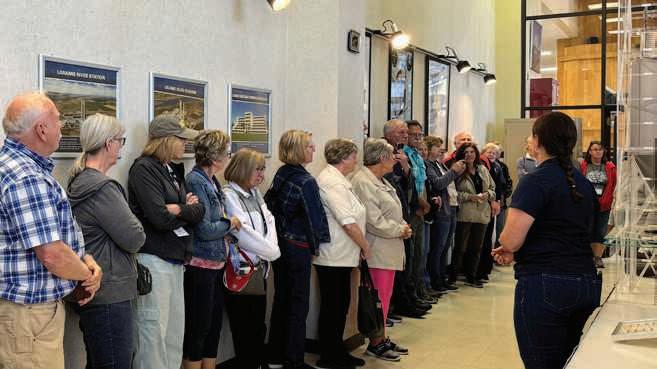

Clay-Union Marketing & Communications Jackie Williams, Union County General Manger Matt Klein and B-Y Member Service Rep Chantelle Jungemann had the privilege to accompany their members on the tour.
the Freedom Coal Mine, where members learned about the layer of lignite coal that is first exposed, blasted, scooped, hauled, crushed, and incinerated. The remaining fly ash is recycled into building products while the land is reclaimed to its original state. The bus was able to go all the way into the mine and see the huge equipment up close.
On the last day while traveling home, we had lunch in Pierre that was sponsored by South Dakota Rural Electric Association (SDREA). Following lunch listened to presentations from South Dakota Rural Electric Association, Public Utilities Commission, and ending with a self-guided tour of South Dakota Capital grounds.
This tour is highly recommended by all past participants. Watch this magazine for updates regarding the next tour tentatively scheduled for 2026.
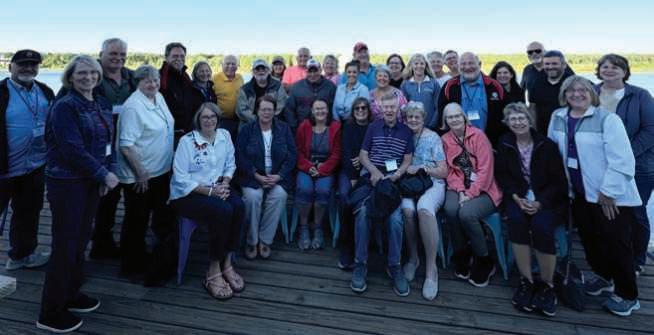
from Bon Homme Yankton Electric, Union County Electric and Clay-Union Electric getting a first-hand look at facilities that power our homes.
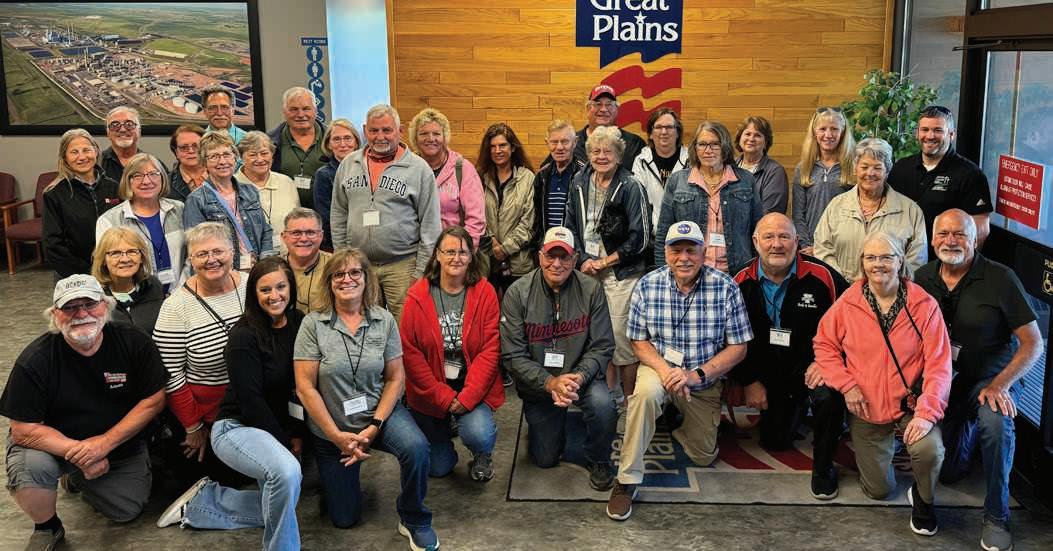


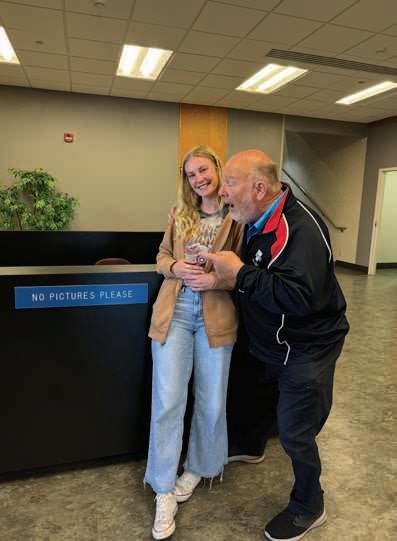
Thank you to our members for attending and contributing to the success of our event. We’re grateful that you could join us on the 2024 Basin Tour. We hope all the members enjoyed this learning opportunity and had some fun along the way.
Who: Bon Homme Yankton Electric Members
What: 2024 Bon Homme Yankton Electric Annual Meeting
When: Tuesday, August 20th, 5:30-7:30 PM
Where: Lidice Street (main street) Tabor
Each membership that registers will receive an attendance gift, a $20 meal certificate to their choice of The Keg in Tabor, Joe’s Substation in Lesterville, or The Marina Bar & Grill in Yankton. All registered members will also be entered for a chance to win one of five $100 bill credits.
Watch your mail in August for your Annual Meeting postcard!
Don’t forget to bring it to the meeting for fast and easy registration!
Reminder Voting Delegate for an Organization must be done 24 hours before the Annual Meeting.
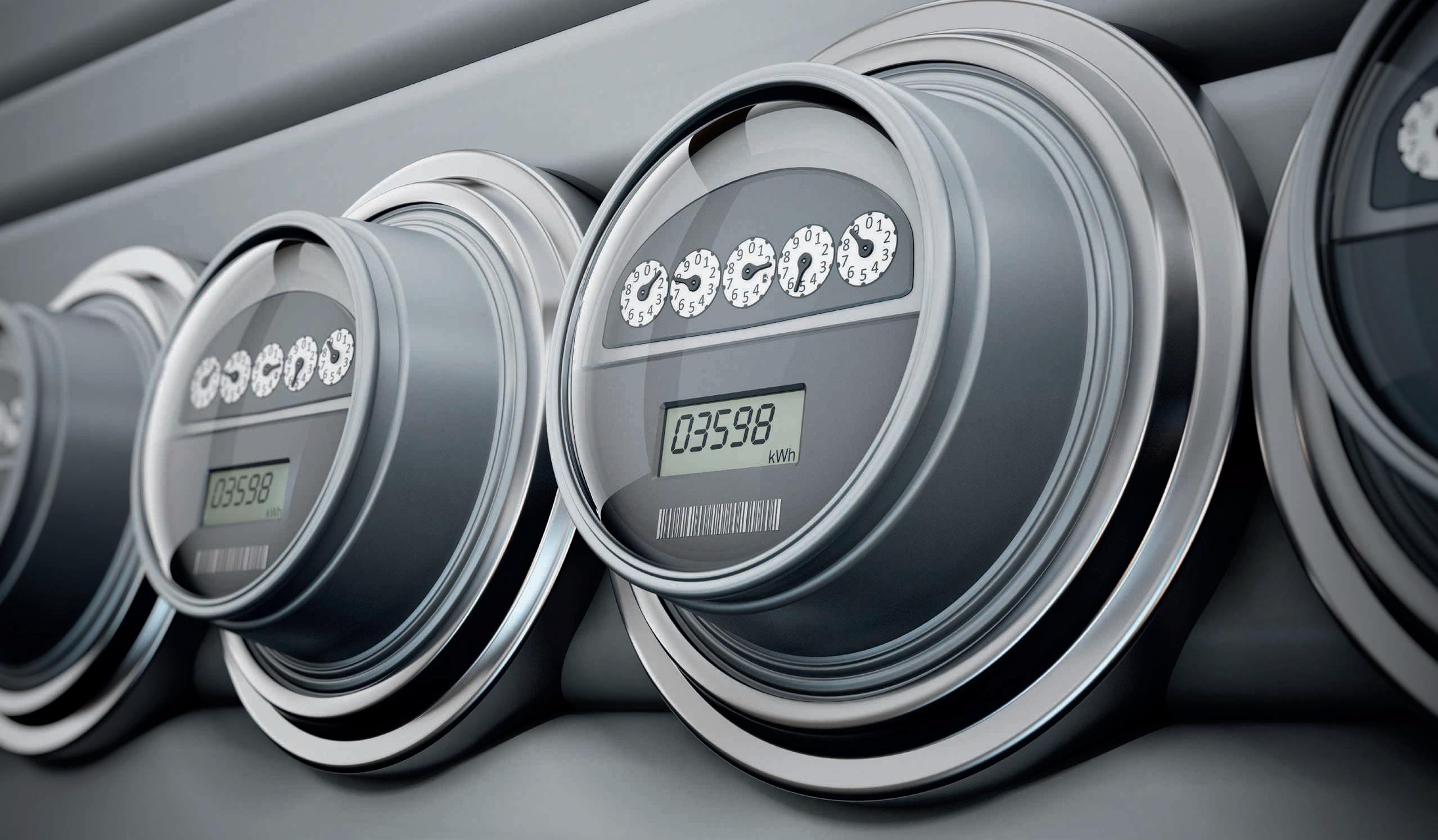
Roger Lawien
More than 40 cooperative linemen and metering specialists gathered in Pierre for South Dakota Rural Electric’s Meter School. This two-day gathering offers the opportunity to enhance skills, build a community of professionals, and learn the nuances of metering. As our need for more energy continues to grow, so does how we properly meter consumption.
Modern electric meters do much more than keep track of the electricity we consume. Correct electric metering is also essential for grid reliability and stability. Accurate measurements aid your cooperative in identifying and addressing issues such as voltage fluctuations or load imbalances promptly.
This proactive approach enhances the resilience of the electrical grid, reducing the likelihood of outages and ensuring a continuous and reliable power supply. At its core, accurate metering ensures fair and precise billing, preventing financial disputes and establishing trust between cooperatives and members.
From an economic standpoint, correct electric metering plays a pivotal role in resource allocation allowing member owned cooperatives to better understand consumption patterns, enabling them to optimize energy distribution and invest strategically in infrastructure development. This, in turn, leads to more efficient operations, cost savings, and improved overall service quality.
Precise metering supports energy conservation.
Members can sign into their account online, view consumption. Armed with accurate usage data they are empowered to make informed decisions about their energy consumption. This encourages responsible energy usage practices, reducing waste and lowering overall demand.
Metering guru and instructor John Pollard said it best. “These training schools are important. Metering is a craft handed down from generation to generation. With the advances of solid-state metering, these students are the supreme candidates to lead us into the future.”
Your electric cooperative is your partner in getting it done!
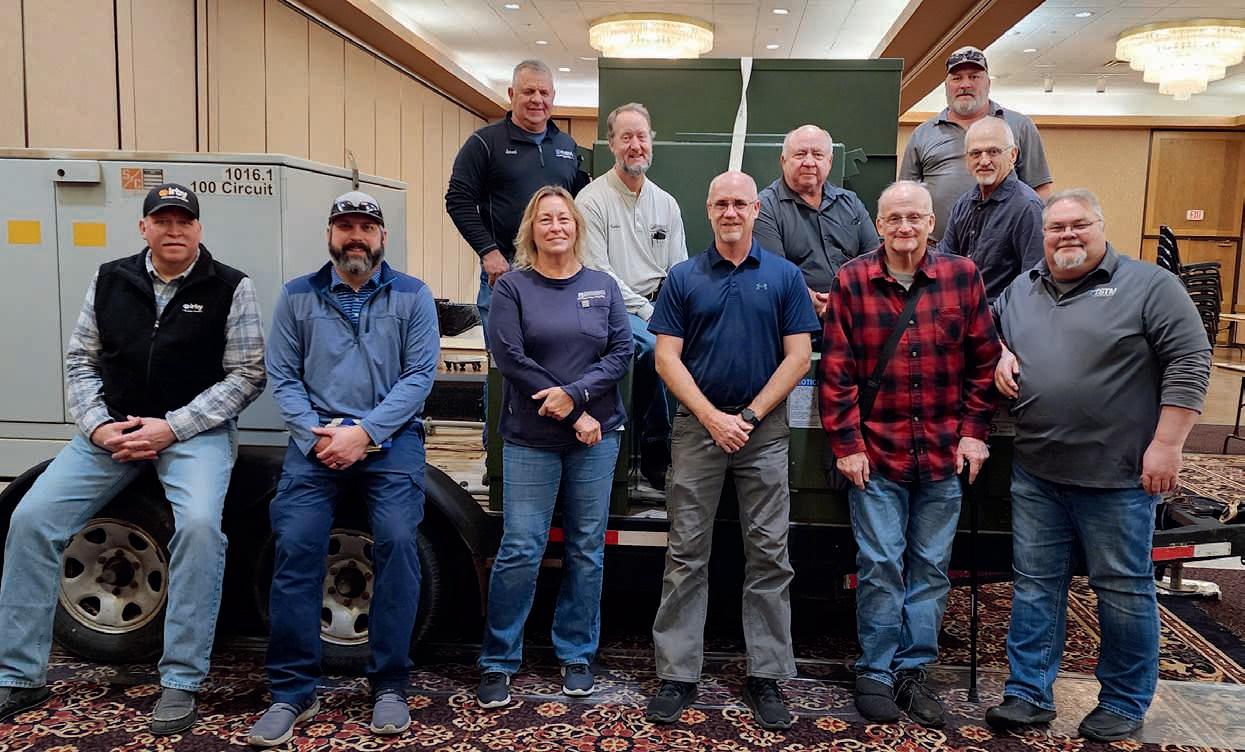
A smart meter is a common term for Automated Metering Infrastructure, or AMI. These are connected devices that transmit information back to the electric utility’s meter data management system and the information collected is used primarily for billing and outage response purposes. Smart meters started to be installed about 25 years ago. Individual utilities have different aged systems, but all electric cooperatives in South Dakota have two-way communication with every meter in the system.
Before smart meters were installed, customers were required to read their own analog meter and report their monthly usage for billing purposes, or a utility employee would physically travel to every home, farm or business in their large service territories to read usage data. Smart Meters take the burden off customers and employees, saving time and money for all consumers. In some cases, the aggregated energy usage information from their home can be visible to the customer via the Internet or a phone application.
• Smart Meters can be used to pinpoint exact locations of power outages more quickly by transmitting an “out of power” notification, meaning a faster response time to outages.
• Smart Meters allow information to be shared with individual consumers about their energy usage – allowing them to find energy efficiency opportunities or potential problems in their home.
• Smart Meters improve electric service reliability and power quality. Information obtained from the automated meters often identifies problems that can be repaired before they cause an outage.
• Information can be used by engineers to more effectively and appropriately size lines and transformers, saving the cooperative and members money.
Automated meters record an electronic kilowatt-hour (kWh) reading, the date and time of energy usage, the overall peak demand of the electric account, if the meter has been tampered with, and the number of times the meter has experienced a loss of power.
Electric cooperatives do not sell or share consumer data. Cooperatives abide by all laws regarding the privacy, protection and disclosure of personal information. The meters and associated communications systems are equipped with security features to prevent unauthorized access.
Research conducted by the Electric Power Research Institute (EPRI), the Utilities Telecom Council (UTS) and other similar groups have shown no health impacts from automated meters. The radio frequencies emitted by digital meters are well below the maximum recommended in federal guidelines. A digital meter equipped to send and receive data has an RF density hundreds of times lower than the RF density of a cell phone, and the meters are installed on the outside of homes or buildings.
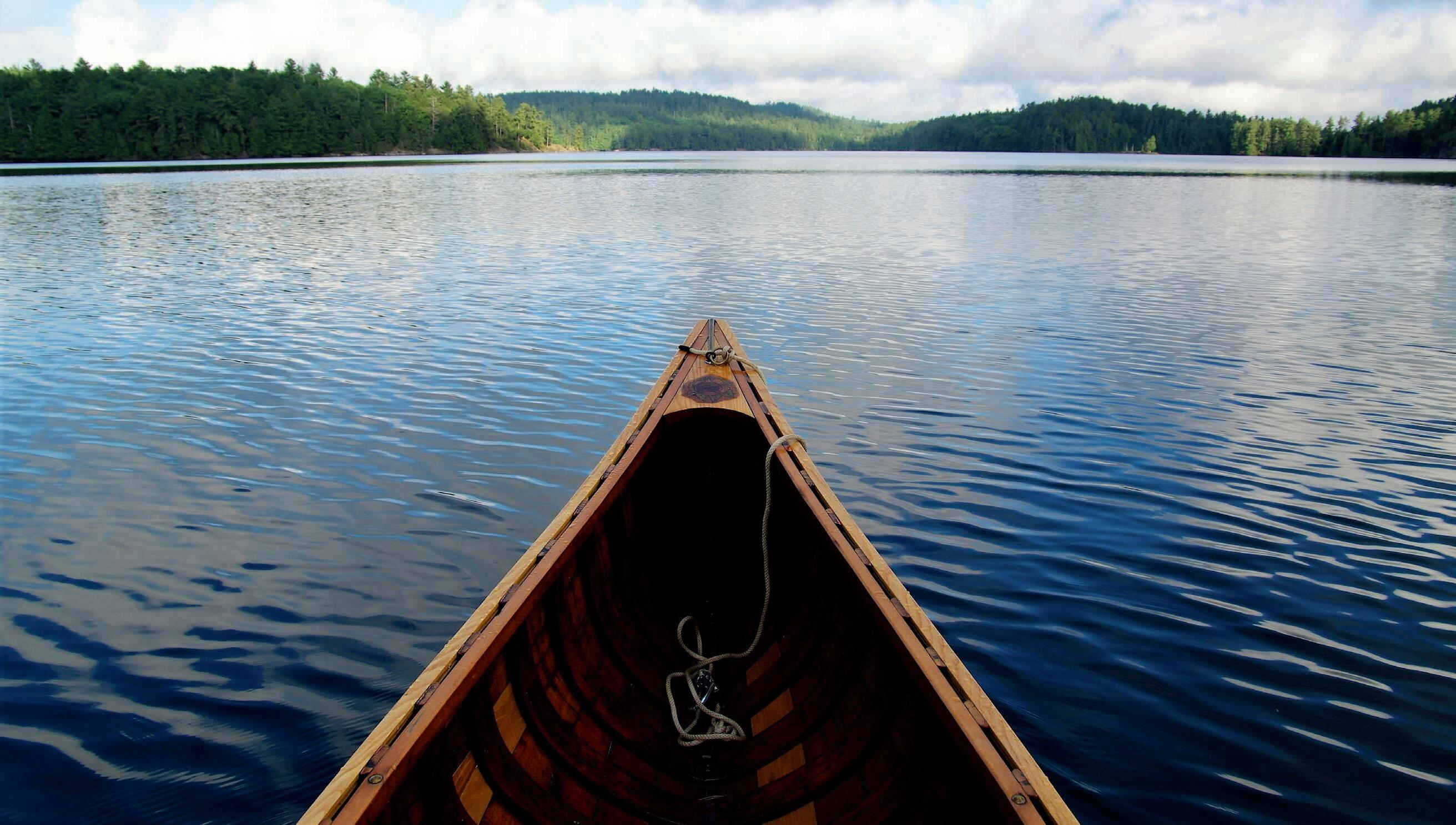
Frank Turner frank.turner@sdrea.coop
To travel from South Dakota to the Arctic by canoe in one season. This is obviously no small challenge. If the season is giving, the added goals of reaching Alaska and even reaching both the Arctic Ocean (Beaufort Sea) and the Pacific Ocean (Bering Sea) would be added as noted later in ‘Trip Segments’.
A party of one in a solo canoe (at this time and likely during the trip).
All gear will be carried at the start of the trip and only replacement gear (hopefully none) will be purchased in route. The gear must and will serve in all conditions of the trip, including weather ranging from hot, sultry days to possible blizzard conditions, including canoeing circumstances like numerous whitewater ascents and great lakes travel.
Most food will be purchased in route. Resupply points will range from modern to basic. The incidence of points, after Lake Winnipeg, will range from several days to three or four weeks.
None.
These are the original notes of outdoor activist and local canoe legend Dick Davidson, detailing his ambitious 1988 journey from South Dakota to the Arctic Circle by canoe. Embarking from Big Stone Lake, the 58-year-old from Sioux Falls attempted to paddle and portage his canoe 4,300 miles over several months through Canadian rivers and streams. Unfortunately, fires and drought in Manitoba prevented him from seeing reaching his goal. Even still, the ambitious journey captured Davidson’s commitment to living a life dedicated to outdoor expeditions.
Davidson passed away in Sioux Falls in 2009, but his legacy and passion for canoeing live on through what is now known as the South Dakota Canoe and Kayak Association, a nonprofit
outdoor recreation organization he founded in 1981. Unlike his solo adventures through the Canadian wilderness, Davidson established the association alongside several co-founders, canoes enthusiasts, and friends, including founding member Dave Greenlee of Sioux Falls.
Although the group participated in races, canoe building, and conservation activism, Greenlee noted that the group mainly gathered mostly “for the sheer fun of canoeing.”
But they weren’t just enthusiasts, this group of committed canoers were fanatics, appealing to all types of canoers from time-tested adventurers like Davidson to the casual outdoor enthusiast. Many of the founding members of the club would look for any opportunity to canoe, even taking to streams in near-freezing temperatures.
“Sometimes in the early spring season when the ice was still out, we would check the rain gauges after a quick rain to see if there was enough flow to enable a quick opening run for our canoes over the ice,” said Greenlee.
Another founding member, Tom Behrend, recalled crafting his own canoes and paddles from scratch, often gifting his creations to friends and enthusiasts for just the cost of the supplies.
“I would hold a class every year on how to build a canoe,” said Behrend. “A group of 10 to 15 of our members would meet every Thursday night in the winter time in somebody’s heated garage. We would build these beautiful canoes with caned seats and all the goodies and then raffle them off once they were finished. It was a great way to raise money for the nonprofit.”
For the less devout, the association offered events catered to amateurs, offering downstream floats and river-bound birdwatches. Greenlee recalled organizing an introductory canoeing instructional for blind individuals. The experience, he said, was incredibly rewarding, both the participants and the instructor had something to learn.
“I had been asked a couple of times to lead a canoeing instructional for the Girl Scouts,” said Greenlee. “Then somebody said, ‘We have a group of individuals who are visually impaired who want to learn what canoeing is like.’ I was used to teaching young kids who just want to get out on the water and flail around and paddle, but this group was actually interested in learning about the canoe.”

installed more than 50 safety signs along recreation areas of the Missouri River encouraging kayakers and canoers to wear lifejackets.
Greenlee continued, “I remember taking one of the individuals out onto the water and saying ‘I’m going to turn to the left here and now we are facing West.’ He said, ‘I know that.’ So, I asked, ‘How do you know that?’ And he said, ‘I know the direction because I can feel the sun on my face.’ How many times had I been in a canoe, looking at the shore and landmarks, but I never realized that I could close my eyes and tell which direction I was going by feeling the sun on my face… He was teaching me.”
Today, the South Dakota Canoe and Kayak Association is still the state’s premier paddling group, promoting safety,
“We host educational pool sessions across the state in Watertown and Sioux Falls where we practice falling out of the kayak and canoe and getting back in,” said Pat Wellner, the association’s current president. “It’s all about encouraging safe practices while enjoying the outdoors.”
Wellner encouraged outdoor enthusiasts of all levels to join the association by visiting the association’s website at sdcka.org.
“Having the lakes and rivers of South Dakota is a great way to see the state from a different perspective that many don’t get to see,” said Wellner. “If anyone is interested in becoming a member, I would encourage them to check out the website, and when you are on the water, please wear a life jacket.”
Bring this coupon and mailing label to the Touchstone Energy® Cooperatives booth at Dakotafest or the South Dakota State Fair to win a prize!
Your Phone Number:
Your E-mail Address:

Aug. 24
2024 McCrossan Boys Ranch Xtreme Event Rodeo McCrossan Boys Ranch Campus Sioux Falls, SD 605-339-1203
JULY 1-4
Annual Black Hills Roundup
7 p.m.
Black Hills Roundup Grounds Belle Fourche, SD 605-723-2010 blackhillsroundup.com
To have your event listed on this page, send complete information, including date, event, place and contact to your local electric cooperative. Include your name, address and daytime telephone number. Information must be submitted at least eight weeks prior to your event. Please call ahead to confirm date, time and location of event.
JULY 5-7, 12-14, 19-21
Laura Ingalls Wilder Pageant
Prairie Girl: Laura’s Dakota Stories
Gates open 6 p.m.
Performance at 8 p.m. $15 adults, $10 kids 6-12 Theater on the Prairie De Smet, SD
JULY 5-7
Badlands Astronomy Festival
10 a.m.-11:30 p.m.
Ben Reifel Visitor Center Interior, SD 605-433-5243
JULY 7-12
Deadwood 3 Wheeler Rally All day
Deadwood Event Complex Deadwood, SD 800-274-1876 ext 1103
JULY 13
Sanford Lab Neutrino Day 9 a.m.-5 p.m. Sanford Lab Visitor Center Lead, SD 605-722-8650
JULY 14-18
Dakota 600 8 -11 a.m. Black Hills National Forest Rapid City, SD 605-645-1756 dakota600.com
July 19
Zucchini Fest 5 p.m. Main Street Bristol, SD 605-590-0000
JULY 19-20
Storybook Land Festival 4-8:30 p.m. on Friday 10 a.m.-4 p.m. on Saturday Storybook Land in Wylie Park Aberdeen, SD 605-626-7015
JULY 19-20
Farley Fest All day Lake Farley Park Milbank, SD 605-432-6656
JULY 19-20
Cookin’ on Kampeska All day
Admission $10 Stokes-Thomas Lake City Park on Lake Kampeska Watertown, SD 605-886-5814
JULY 26-28
Bruce Honey Days 5k walk/run, parade, cookouts, craft show, 3-on-3 basketballl tournament, street dance and more. Jay Street Bruce, SD 605-627-5671
Aug. 17
Yankton Extreme Bull Riding Tour
7 p.m. Yankton, SD 605-760-2153
AUG. 6-8
IDEAg’s Farmfest 8 a.m.-4 p.m. Redwood County, MN 651-316-4369
Note: Please make sure to call ahead to verify the event is still being held.